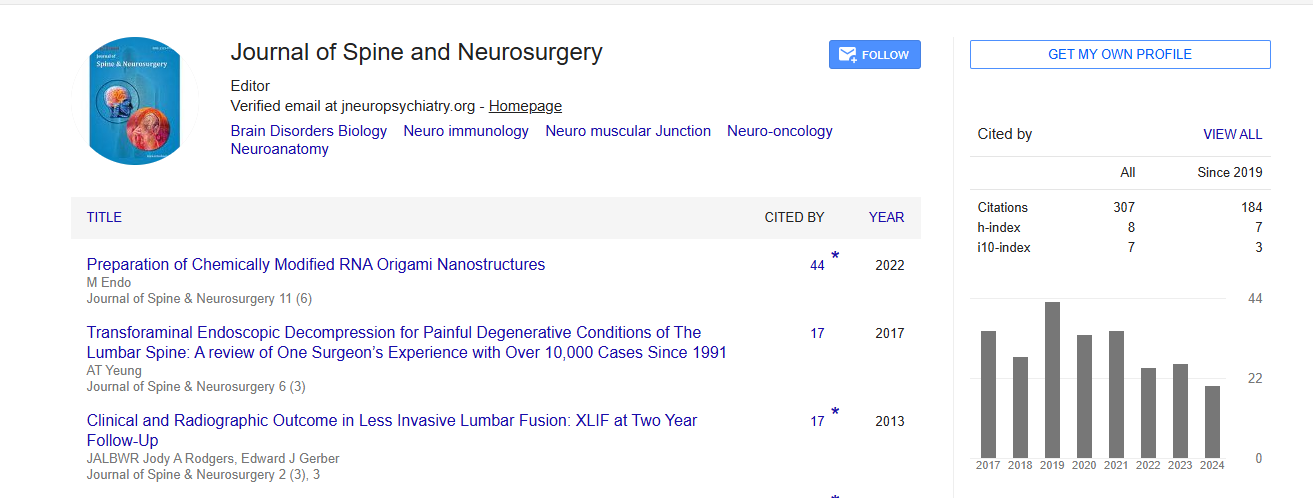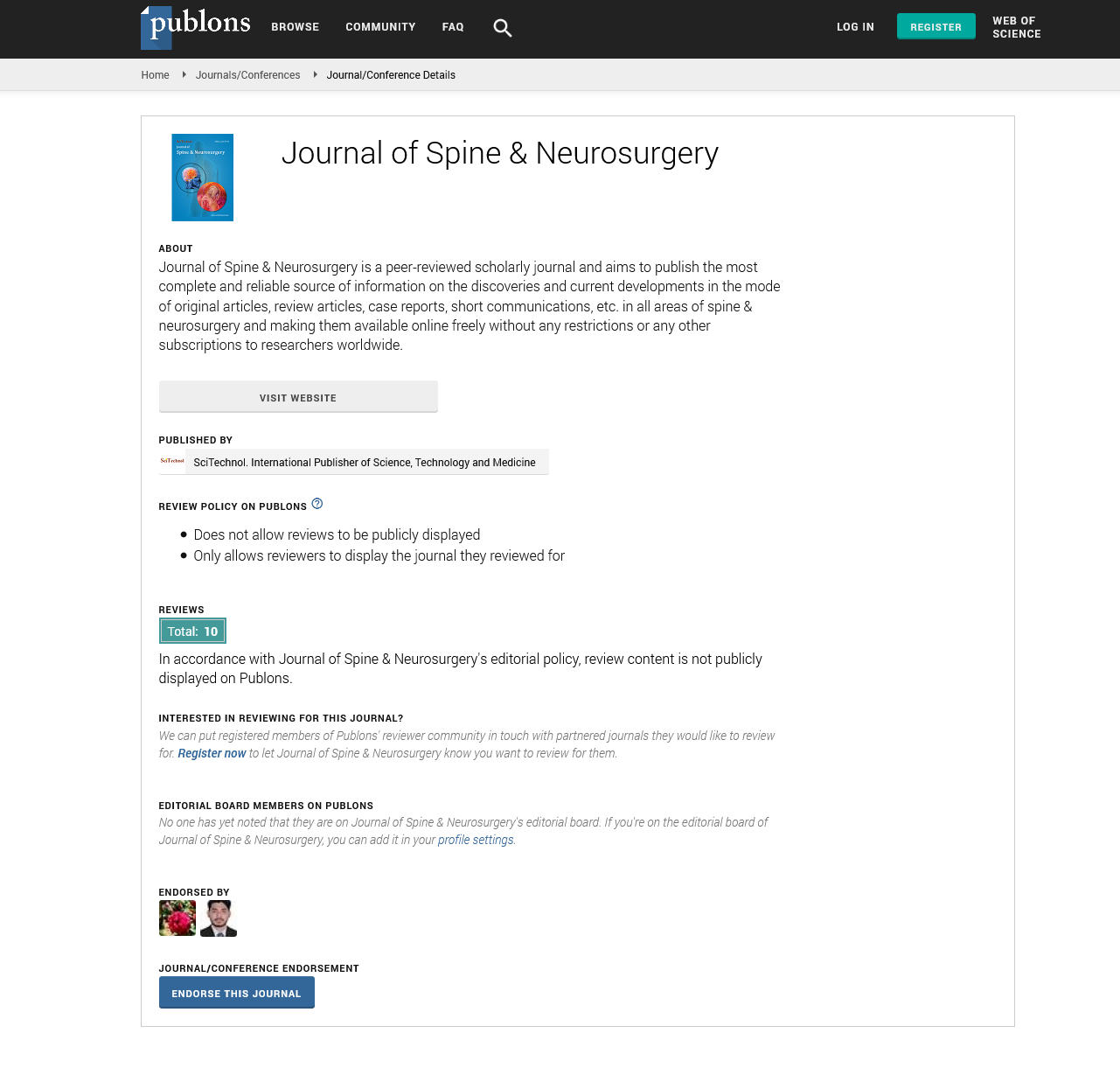Opinion Article, J Spine Neurosurg Vol: 12 Issue: 6
Dystonia: The Complexities of Musculorum Deformans
Serai Kobili*
1Department of Neuroradiology, Centro Hospitalar Universitario de Sao Joao, Porto, Portugal
*Corresponding Author: Serai Kobili,
Department of Neuroradiology, Centro
Hospitalar Universitario de Sao Joao, Porto, Portugal
E-mail: serai_kobili1@gmail.com
Received date: 27 November, 2023, Manuscript No. JSNS-24-128390;
Editor assigned date: 29 November, 2023, PreQC No. JSNS-24-128390 (PQ);
Reviewed date: 14 December, 2023, QC No. JSNS-24-128390;
Revised date: 21 December, 2023, Manuscript No. JSNS-24-128390 (R);
Published date: 28 December, 2023, DOI: 10.4172/2325-9701.1000186.
Citation: Kobili S (2023) Dystonia: The Complexities of Musculorum Deformans. J Spine Neurosurg 12:6.
Description
Dystonia, specifically referred to as Musculorum Deformans, is a neurological disorder characterized by involuntary muscle contractions leading to sustained or repetitive movements, abnormal postures, and twisting or repetitive motions. Dystonia Musculorum Deformans is a subset of dystonia, which is a broader category encompassing various forms of movement disorders the complexities of Dystonia Musculorum Deformans its symptoms, causes, and management strategies. Dystonia is a neurological condition that results in abnormal muscle contractions leading to sustained or repetitive movements. Musculorum Deformans specifically denotes a type of dystonia characterized by muscle deformities. Dystonia can manifest in different forms, affecting various parts of the body. Focal dystonia involves a single body part, such as the neck or hand, while generalized dystonia can affect multiple areas. Dystonia Musculorum Deformans often involves generalized muscle contractions and deformities.
Symptoms
The symptom of Dystonia Musculorum Deformans is involuntary muscle contractions leading to abnormal movements or postures. These contractions can be sustained or repetitive. Individuals with Dystonia Musculorum Deformans may exhibit twisting or repetitive motions due to the sustained muscle contractions. These movements can affect daily activities and quality of life. Persistent muscle contractions can lead to deformities in affected muscles. Over time, this can result in physical changes in the structure of the muscles, contributing to the characteristic features of Musculorum Deformans.
Causes and risk factors
Dystonia Musculorum Deformans often has a genetic basis. Mutations in certain genes, such as TOR1A or THAP1, have been associated with the development of this disorder. Disruptions in the balance of neurotransmitters, particularly dopamine, in the brain may contribute to the development of dystonia. While the primary cause is genetic, certain environmental factors or triggers may exacerbate symptoms in individuals with a genetic predisposition to Dystonia Musculorum Deformans.
Management and treatment
Medications that influence neurotransmitters, such as anticholinergic or medications that modulate dopamine levels may be prescribed to manage symptoms. However, response to medications can vary, and finding an effective treatment may involve a trial-anderror approach. Botulinum toxin injections can be used to temporarily paralyze or weaken the muscles affected by dystonia. This can help alleviate symptoms and improve function. Physical therapy plays a vital role in managing Dystonia Musculorum Deformans. Therapeutic exercises and techniques can help improve muscle strength, flexibility, and overall function. In severe cases of dystonia, particularly generalized forms, deep brain stimulation may be considered. This surgical procedure involves implanting electrodes in the brain and a device that delivers electrical impulses to modulate abnormal neural activity. Adopting lifestyle modifications, such as stress management techniques and avoiding triggers, may help in reducing the severity of symptoms.
Dystonia Musculorum Deformans can significantly impact an individual's daily life, affecting mobility, fine motor skills, and overall quality of life. The psychosocial impact of dystonia should not be overlooked. Living with a chronic movement disorder can lead to emotional and psychological challenges, necessitating support from healthcare professionals, support groups, and loved ones. A approach to managing Dystonia Musculorum Deformans involves a multidisciplinary team comprising neurologists, physical therapists, and mental health professionals. This collaborative effort aims to address various aspects of the condition and enhance overall wellbeing.
Conclusion
Dystonia Musculorum Deformans, as a subset of dystonia, poses unique challenges due to its impact on muscle function and physical appearance. While the disorder is primarily genetic, advances in medical understanding and treatment options offer hope for individuals living with this condition. A personalized and multidisciplinary approach, including medications, physical therapy, and, in some cases, surgical interventions, can help manage symptoms and improve the quality of life for those affected by Dystonia Musculorum Deformans. Additionally, ongoing research holds the promise of further insights into the mechanisms underlying this complex neurological disorder.
 Spanish
Spanish  Chinese
Chinese  Russian
Russian  German
German  French
French  Japanese
Japanese  Portuguese
Portuguese  Hindi
Hindi 
